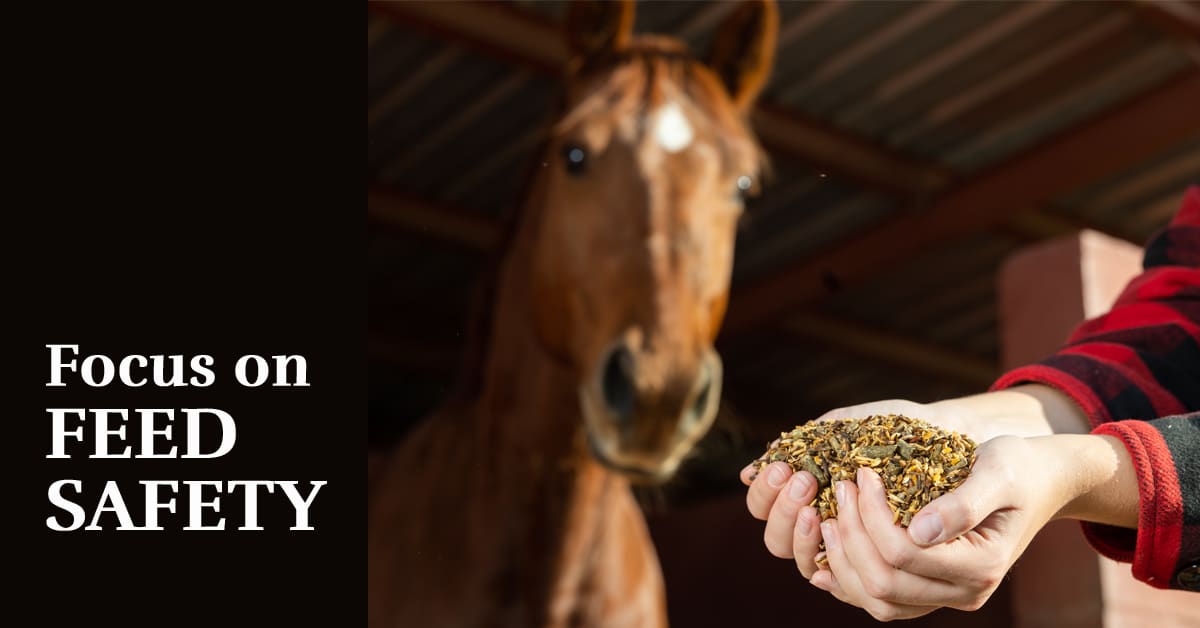In the world of horse sports, injuries are heartbreakingly common and an excellent place to start when explaining why so many are holding out hope for cannabis medicines to be developed and tested. As a commonplace example, soft tissue injuries tend to happen frequently and can often result in an extended period of rest and may even mark the end to a horse’s sport career, but preliminary research suggests that cannabis might be able to shorten recovery and be less harmful than traditional treatments.
NSAIDS vs CBD
For pain relief, horse owners and veterinarians currently rely on a class of drugs called non-steroidal anti-inflammatory drugs (NSAIDs) which include Phenylbutazone (Bute). NSAIDs are common in human medicine in the form of ibuprofen, aspirin and paracetamol. Horse owners and vets keep NSAIDs for horses on hand to perform a similar function: reduce the swelling and pain caused by inflammation. Bute is an effective drug which is also cheap and easy to administer, however Bute causes a host of side effects ranging from ulcers to bone density issues. Cannabis, on the other hand, has proven to aid in pain and inflammation while it is also effective in aiding in the healing of a variety of gastrointestinal issues as well as the healing of bone fractures. A 2015 published study from The Journal of Bone and Mineral Research shows promise that the cannabinoid cannabidiol (CBD) could serve to strengthen bones and accelerate the healing of fractures.
The gastric and colonic ulcers and kidney damage that can be caused by NSAIDs often mean more medications to treat a single condition. A $2 dose of Bute for that wrenched ankle is now a $40 per day problem when GastroGard (Omeprazole) is added. On the other hand, the safety of CBD has been acknowledged by the World Health Organization and World Anti-Doping Agency. Cannabis could serve to reduce the number of traditional drugs a horse takes, as well as the length of NSAID treatment. So, not only is cannabis less harmful than typical pain and inflammation drugs for horses, it could help cut medical costs for owners.
Cannabis: A Potent Medicine
CannaHorse is a Canadian company, founded by Warren Byrne, which focuses on advancing equine health through the medical benefits of cannabis. Byrne became a staunch believe in the benefits of cannabis after breaking his humerus bone in a serious riding accident. He was given opioids to dull the pain after surgical insertion of a plate and seven screws, but not everyone can tolerate opioid-based drugs. When Byrne experienced adverse reactions to the drugs, he advised his orthopedic surgeon that he was switching to cannabis.
“What I discovered during my rehabilitation experiment was that cannabis didn’t get rid of the pain, but it did make the pain more tolerable and there were no side-effects,” said Byrne. His experience is something that brain imaging seems to verified by a study done by University of Oxford. “I recovered three weeks faster than expected by the surgeon, and with almost no opioids or NSAIDs to assist.”
Part of what makes cannabis a potent medicine is that it is a complex combination of drugs, thanks to the hundreds of compounds, called cannabinoids, which the plant produces. Cannabinoids, cannabidiol (CBD) and tetrahydrocannabinol (THC) included, connect to a network of receptors in the bodies of humans and other mammals called the endocannabinoid system (ECS).
When we talk about cannabis in a medicinal sense, it’s correct to use a term like cannabinoid-based medicine (CBM) because cannabis based medicine is more than just CBD. The term refers to the various forms of medicine that can be made from the cannabis plant using a variety of cannabinoids, including minor cannabinoids like CBN which can help to stimulate production of new bone cells by activating stem cells. There are also indications that CBN may be helpful in healing fractured bone and helping reverse bone loss. Another minor cannabinoid called cannabigerol (CBG) is not only antibacterial but also seems to defend against methicillin-resistant Staphylococcus aureus (MRSA) in rodents.
Cannabis in Horses
There is no published research or any proper research on dosing, but anecdotal reports from pet owners suggests that cannabinoids has been beneficial in treating pain, anxiety and other disorders. As such, experts believe cannabis based medicines will work for horses as they share a critical commonality: the endocannabinoid system (ECS), a body-wide network of receptors that bind to cannabinoids (THC, CBD, etc) from the cannabis plant. The ECS helps to regulate various systems in the body to pull them toward a homeostatic state.
As cannabinoid receptors are spread throughout the body, cannabis medicines can target various internal systems at once, including parts of the brain that regulate mood (something that chronic pain patients may find challenging even on their “good” days). Cannabis is said to have such adjunct effects as calming anxiety and aiding in exercise recovery, which, if consistent in horses, could eliminate the need to take a combination of drugs for a constellation of symptoms.
Currently, while veterinarians can prescribe almost any other drug, including fentanyl and other opioids and narcotic pain killers, they may not authorize the use of cannabis based medicine itself. The International Equestrian Federation (FEI) ban on CBD use in horses covers a small number of competition horses, leaving the vast majority of North America and Europe’s 15 million horses as potential patients. A CannaHorse survey of horse owners indicated that over 80 percent are interested in cannabis based medicines for their horse.
Research is needed to understand what constitutes safe and correct dosing. While some companies have suggested dosages based on bodyweight, there is no science to support this method for humans, much less extrapolating from that to create equine guidelines. Some bad actors even claim that their CBD product clears the system for testing in seven days which is not accurate, nor FDA compliant.
CannaHorse is also evaluating the best method to administer cannabis to horses. Adding cannabis as a feed supplement might seem like the most natural delivery method, but it is unlikely to be effective, given what is known about the equine stomach. With humans, only about 14% of orally consumed cannabis is absorbed into the blood; this statistic does not bode well for pelleted or feed additive administration of cannabis in horses.
Pharmaceutical Investment for Equine Research
Byrne’s company is attracting attention and recently received an investment from one of the world’s leading animal pharmaceutical manufacturers. By partnering with a well-established and trusted name in veterinary medicine, CannaHorse has the ability to manufacture their products in five countries, aiming to be the first to market in all 75 countries their partners operate in. The company has received ethical approval and is awaiting authorization to begin testing its products on horses in South Africa, where cannabis legalization has made several steps forward in recent years.
Federal regulators are interested in CannaHorse presenting their research findings from these clinical trials to veterinary boards, indicating that the doors to cannabis in equine sports are not closed and the current regulations are not set in stone.
“In our view, cannabis for horses is not a trendy health supplement, our products are medically focused and pharmaceutical grade and we see veterinarians as an important part of the process,” said Byrne. “Our research indicates horse owners are very keen to try the products in our pipeline. Like in human medicine, horse owners want an alternative to the traditional pharmaceutical offerings. We hope the days of stacking pharma products to treat certain, often simple, conditions could be behind us.”
Dr. Michael Lindinger, PhD a former University of Guelph professor with more than 25 years of experience and one of Canada’s leading nutraceutical experts, will oversee the trials. He has led 130 peer-reviewed clinical trials, holds BSc and MSc degrees in comparative animal physiology and a PhD in medical sciences.
“Cannabis is about to become the world’s most widely used medical substance for both people and animals,” comments Dr. Lindinger, PhD. “CannaHorse is taking a measured and scientific approach to their product development, something that is vital for any legitimate medical product.”
Once safety and dosing are profiled, CannaHorse expects to enter the American market via California in the third quarter of 2020, followed by the Canadian and European markets when regulations allow cannabis for horses and other domesticated animals.
The Latest









